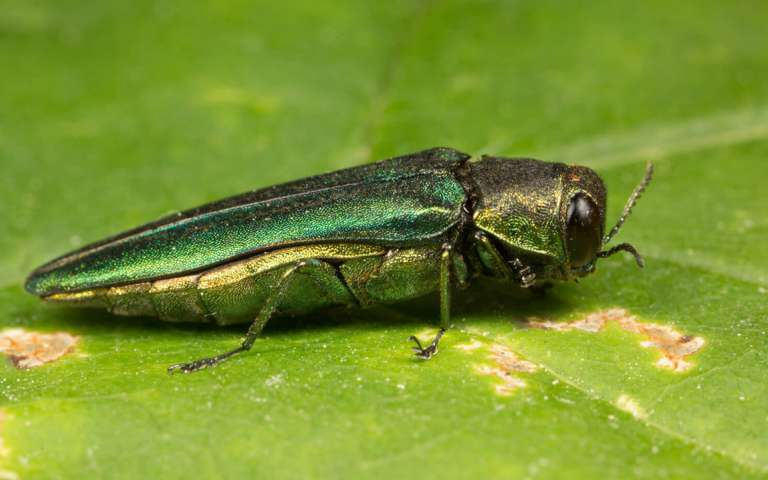
AUGUSTA, Maine — The Maine Department of Agriculture, Conservation and Forestry on April 17 announced a formal quarantine on emerald ash borer and material that may harbor the pest.
The quarantine area includes all of York County and the northeastern corner of Aroostook County. Boundaries include a buffer on those towns where EAB had been detected, which included Madawaska and surrounding area as well as some southern Maine towns.
The goal of the quarantine, department officials said in a press statement, is to slow the spread of the insect to delay impacts to the ecosystem, native culture and the state’s economy.
Department researchers found evidence of the bright green insect in northern Aroostook County last May. On Aug. 10, 2018, the DACF declared an emergency order preventing the movement of certain ash products and untreated firewood in northern Aroostook County. That order targeted Frenchville, Grand Isle and Madawaska.
The emergency order expanded to the York County towns of Acton, Berwick, Lebanon and Shapleigh in September, when scientists confirmed emerald ash borer presence there. The affected areas have remained under the stop order since that time.
Now, the formal quarantine rules prohibit movement of ash nursery stock from the quarantine area, and regulate the movement of hardwood firewood, hardwood chips and other ash products with bark, such as logs and pulp, and untreated ash lumber, department officials said.
DACF staff, along with the U.S. Department of Agriculture, Animal and Plant Health Inspection Service, Plant Protection and Quarantine, are working with the public and impacted industries to ensure compliance with the quarantine.
“A quarantine can help slow the spread of this destructive insect into uninfested areas,” said State Entomologist Allison Kanoti. “That gives businesses, Native American craftspeople and artists that use ash, as well as homeowners, landowners and municipalities who care for ash across the state, additional time to consider their options and make plans for a future with EAB.”
That future will include far fewer ash trees, which are important not only in the wood products industry and wood crafts, but as and street trees in towns and cities. Maine forests have more than 400 million white, green and brown ash trees at risk. DACF data indicate that ash trees comprise 4 percent of Maine’s hardwood forest. The EAB threatens all species of ash trees (except mountain ash).
The pest is an invasive wood-boring beetle that attacks ash trees by burrowing into them, feeding on them and disrupting the flow of water and nutrients, causing the tree to die. Native ash trees have little resistance to attack, and often die within a few years of the beetle’s initial arrival.
EAB was first discovered in North America in 2002. Since its arrival, it has killed hundreds of millions of ash trees.
When last August’s stop order went into effect, DACF spokesman John Bott said if there is a bright side, it is that EAB infestation is relatively slow-moving.
“It spreads naturally very slowly, like a half-mile up to a mile a year, but can be transported very quickly through moving firewood or ash trees,” Bott said. “Over time, yes, it will decimate the ash trees in the area, unless a biological control [is developed] or we identify a more resistant species.”
White ash shows some resistance to and tolerance of attack by EAB, department officials said. A fraction of those trees may be able to survive. The U.S. Department of Agriculture has been working on a program to provide ash with another form of defense — tiny wasps from Asia that attack ash borer eggs or young, and may eventually bring their populations to a tolerable level.
Despite these glimmers of hope, the department said, EAB will devastate ash in Maine. Ash will be lost as a functional part of forest ecosystems, joining the ranks of American elm and American chestnut. Ash will no longer be available as a material for forest products including baseball bats, baskets, tool handles, flooring, cabinetry and others.
Additional information on EAB, how to recognize and report its damage, and details of the Maine ash quarantine, can be found at www.maine.gov/eab.







